Single Spins, Single Photons
Quantum Optics in the Solid-State
We apply the concepts of quantum optics to solid-state emitters. The overriding goal is to create useful hardware for quantum information applications: a single photon source and a spin qubit. The single photon source should be a fast and bright source of indistinguishable photons on demand. The spin qubit should retain its coherence over many quantum operations. These are challenging goals. Rich and varied solid-state physics enters into the work via our design work – control of charge states, photonics, and phononics environments – and via the complex dephasing mechanisms. In fact, by quantum control of the solid-state emitter, we are able to probe the underlying interactions in the solid-state – examples include the central spin problem, the electron-phonon interaction and Kondo-like interactions – with unprecedented resolution. The goals are to understand what limits these devices and to come up with creative ideas to circumvent the main problems. An outstanding goal is to develop a scalable approach to couple multiple qubits.
Quantum dots
A workhorse system is a self-assembled quantum dot in a semiconductor. In the best case (resonant excitation, high-quality material, low temperature) a single quantum dot has exceptional properties: the emission is perfectly anti-bunched, and the photons are highly indistinguishable. However, nuclear spin noise limits both electron spin coherence and photon indistinguishability and the excellent photonics properties are not necessarily preserved on nano-engineering the photon and phonon modes. Also, single-photon sources are required at more useful wavelengths, for instance at 780 nm to interface an “artificial Rb atom”, the quantum dot, to real Rb atoms for a quantum memory. All these problems must be addressed.
Key recent achievements
- Observation of quantum interference between photons emitted by two remote GaAs quantum dots, and implementation of a CNOT-gate.
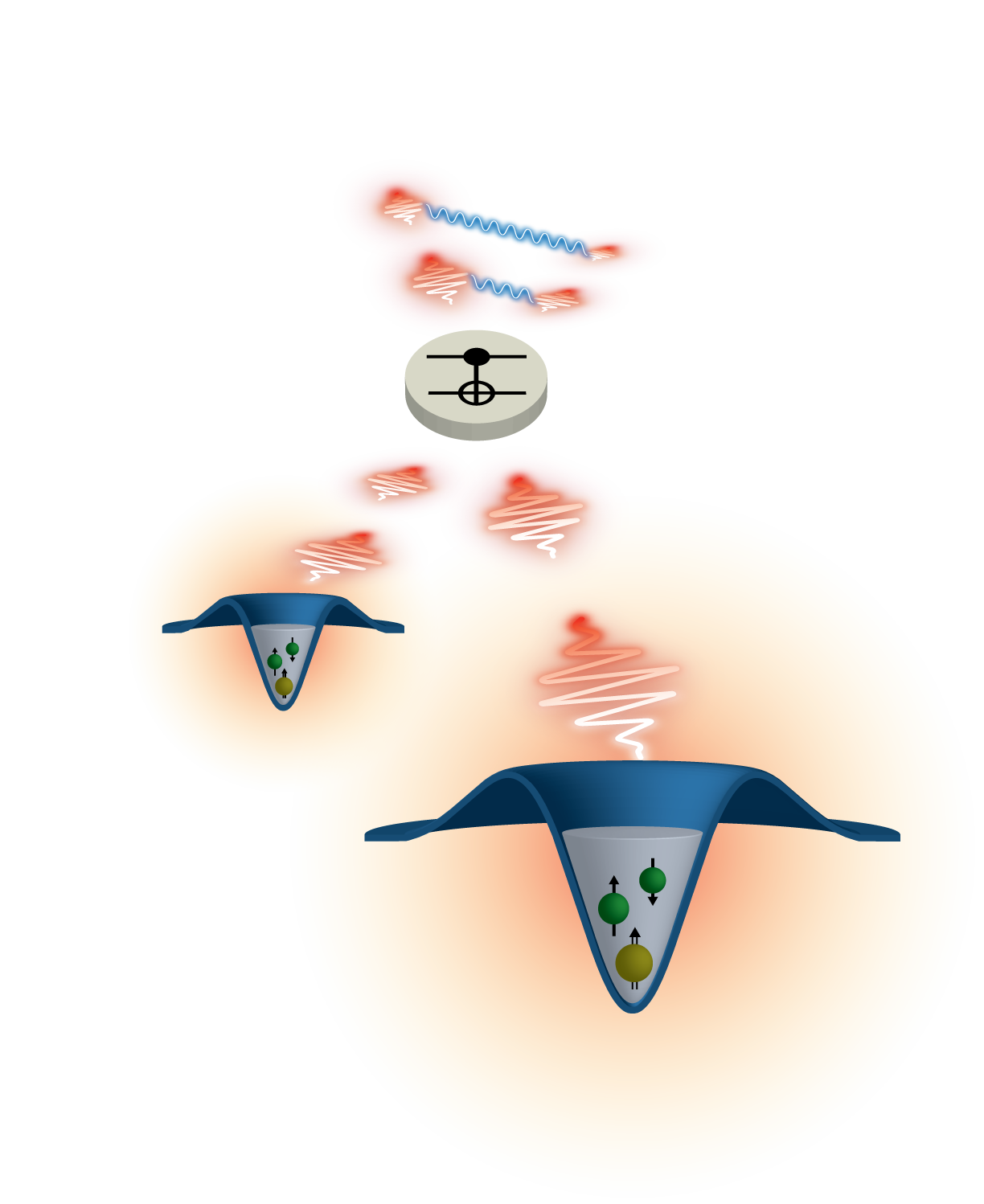
- Observation of the radiative Auger effect in the emission spectrum of a singly charged quantum dot.
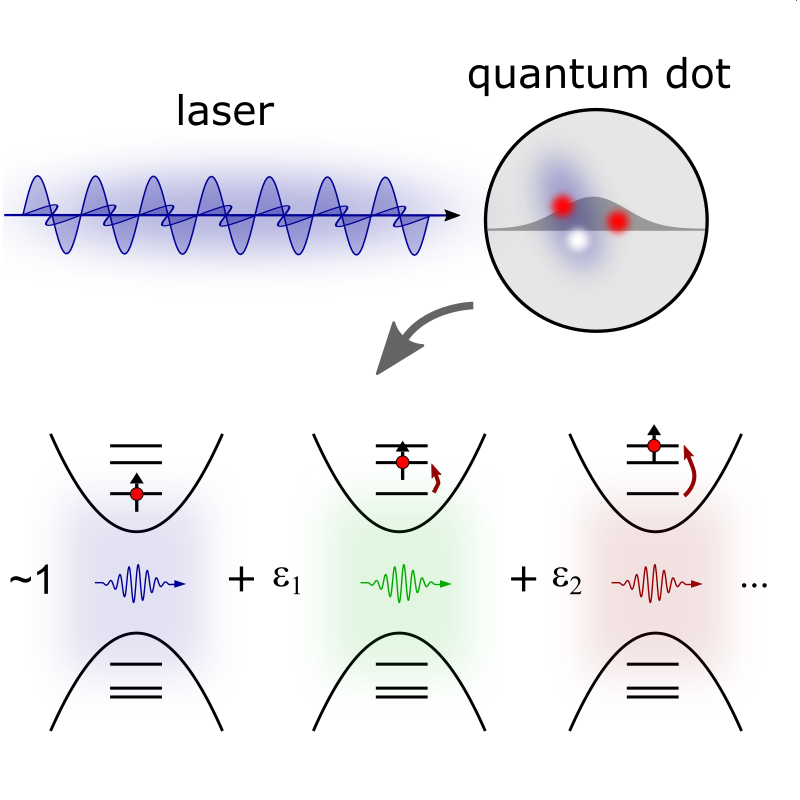
- Development of low-noise GaAs quantum dots at the Rb-wavelength.
- Discovery that the Voronoi cell size of GaAs quantum dots is strongly correlated to the emission wavelength.
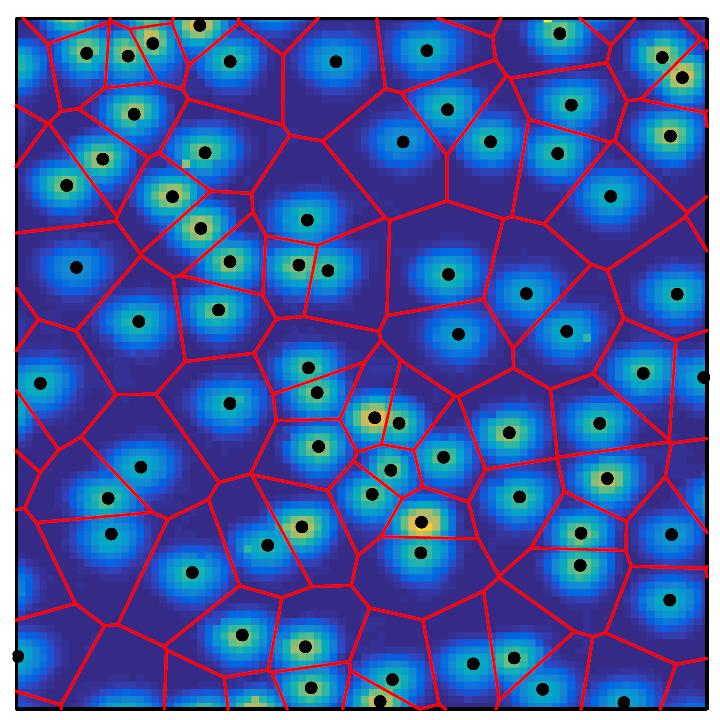
- Demonstration of near-transform limited optical linewidths on single quantum dots in a nanobeam waveguide.
- Creation of InGaAs quantum dots without electron wetting layer states.
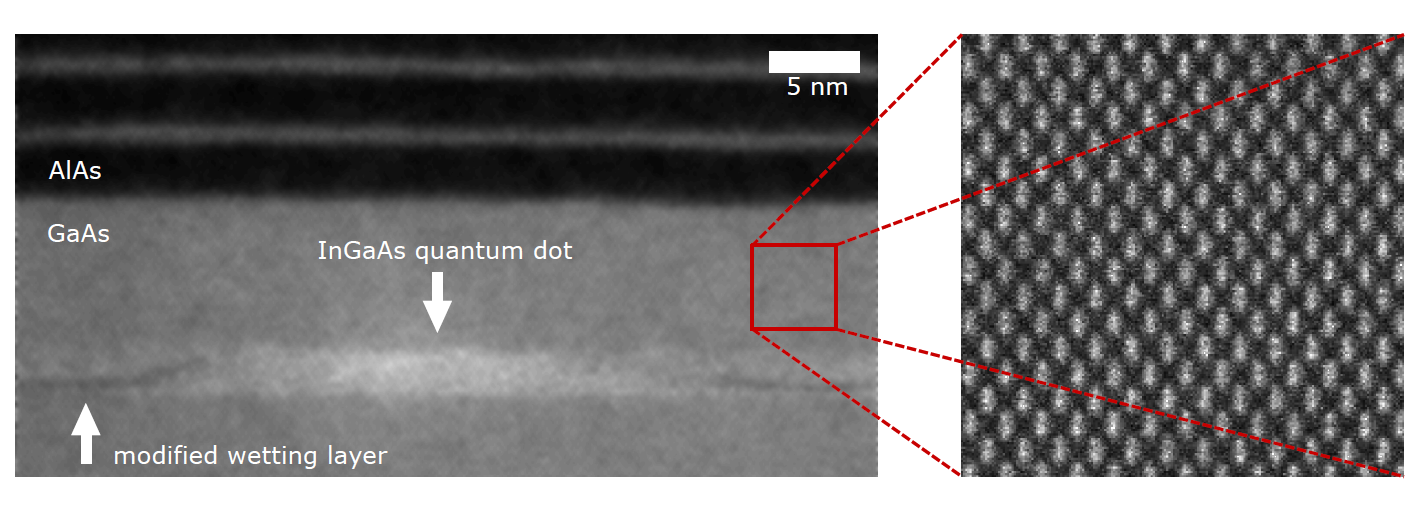
- Demonstration of near-transform limited optical linewidths on single quantum dots in a nanobeam waveguide.
- Far-field nanoscopy on a semiconductor quantum dot via a rapid-adiabatic-passage-based switch.
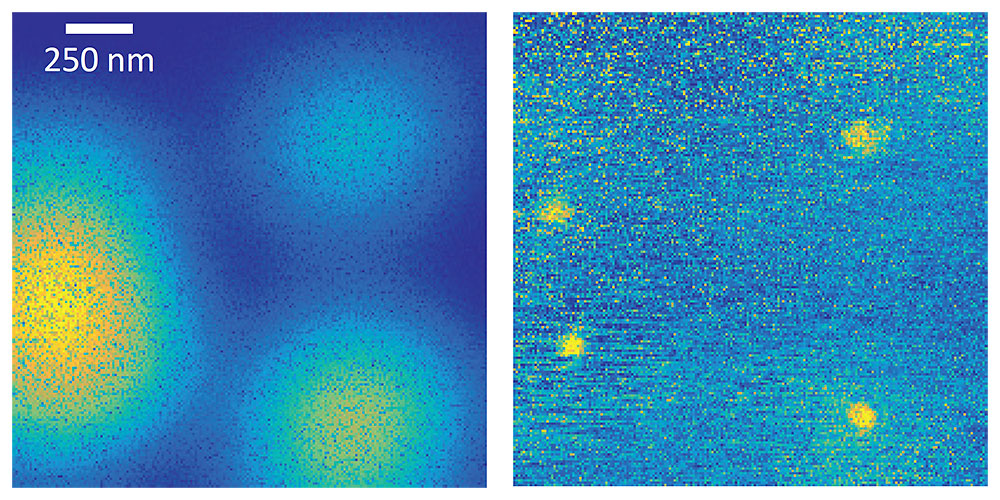
- Observation of the mechanical motion of a semiconductor nanowire via the photon statistics of an embedded quantum dot.
- Demonstration of a decoupling of a hole spin qubit from the nuclear spin noise. The experiments set a lower bound on T2* of 500 ns.
- Observation of the coupling between two remote nuclear spins mediated by a delocalized electron spin. This is an example of an RKKY interaction. It is the mechanism predicted to determine the ultimate limit on electron spin coherence in a GaAs quantum dot. The experiment uses nuclear spins to probe electronic properties.
- Demonstration of transform-limited optical linewidths.
- Frequency-locking of a quantum dot single-photon source to a reference laser.
- Nuclear magnetic resonance on a quantum dot: a new protocol based on adiabatic passage to determine the key nuclear spin properties of a single InGaAs quantum dot (indium concentration, nuclear spin temperature, isotope-dependent polarization).
- Charge noise and spin noise in the quantum dot spectrum: application to an ultra-clean device results in a quantitative analysis of the noise. The root-mean-square charge noise (specifically, noise in the electrostatic potential at the location of the quantum dot) is remarkably small, just 1 μV/Hz1/2.
Current projects
- Investigation of the radiative Auger effect
- Development of the hole spin qubit in a self-assembled quantum dot
- Quantum dots in photonic structures such as one-dimensional waveguides and micro-cavities
- Phononics: investigation of the coupling of a quantum dot exciton to a high-Q-factor mechanical mode
- Phononics: reduction in phonon-based spin dephasing by nano-engineering the phonon modes
- Development of a single photon source matched to the Rb wavelength using droplet quantum dots in GaAs
Key collaborators
- Arne Ludwig and Andreas Wieck, RU Bochum (provision of ultrahigh quality GaAs-based heterostructures containing InGaAs quantum dots, development of GaAs droplet quantum dots)
- Philipp Treutlein, Cold Atom Optics Lab in Basel (quantum dot/Rb-atom hybrid quantum memory)
- Peter Lodahl and Leonardo Midolo, Quantum Photonics, Niels-Bohr Institute, Copenhagen (quantum dots in photonic crystal waveguides, quantum dot phononics)
- Armando Rastelli, Institute of Semiconductor and Solid State Physics, Johannes Kepler University, Linz (development of GaAs droplet quantum dots)
A Tunable Micro-Cavity
Solid-State Cavity-QED
A microcavity enhances the light-matter interaction. In quantum photonics, a microcavity is a versatile tool. Radiative recombination of a solid-state emitter can be accelerated and photon extraction efficiency enhanced by exploiting the weak coupling regime of cavity-QED. The strong coupling regime allows two emitters to be coupled together even when the microcavity is not populated by a real photon. A microcavity is particularly valuable in solid-state systems: the microcavity can accelerate the photonic interaction, effectively weakening the effects of the solid-state-related dephasing mechanisms. Solid-state monolithic micro-cavities, micro-pillars, photonic crystal cavities, for instance, offer limited tuning. The emitter position is typically fixed; there are limited in situ possibilities of tuning the emitter and cavity mode into resonance. This lack of tuning represents a problem, particularly in the present development phase where it is important to quantify the effects of the micro-cavity via the detuning dependence.
We have developed a microcavity that is fully tunable. It is essentially a highly miniaturized Fabry-Perot cavity: the bottom mirror is a plane mirror; the top mirror is curved to confine the light. The radius of curvature of the top mirror is typically 10 microns, the distance between the two mirrors is at most a few microns: this results in a microcavity mode with an extent just above the diffraction limit (λ/2).

The curved mirror is fabricated in silica, either in a silica substrate or in the end facet of an optical glass fibre, by laser ablation. In the ablation process, local melting takes place resulting in an atomically flat surface. The substrate is then coated with a high-quality dielectric Bragg mirror. The micro-cavity itself consists of a bottom and top mirrors with position control: 3-axes to determine the micro-cavity properties (lateral mode location with respect to the sample, mode frequency); 3-axes to position the mode with respect to the focus of a fixed lens.
Key features of the microcavity
- High-finesse, high-Q
- Low mode volume
- Open access: the system is highly versatile
- Free-beam coupling: excellent mode-matching and polarisation control
- Cryogenic operation, presently up to a finesse of 10,000 without any dynamic stabilization
- Tunability: micro-cavity mode position (x and y), micro-cavity frequency (z)
Recent achievements
- A single-photon source with end-to-end efficiency of 57%. The single photons are highly indistinguishable (98% two-photon interference visibility) even when created more than a microsecond apart. The radiative lifetime reduces to just 50 ps on resonance with the microcavity allowing operation at GHz-rates.
- Tuning of the mode-splitting of a semiconductor microcavity via an applied uniaxial stress.
- Suppression of loss at the GaAs surface via a simple passivation procedure.
- Demonstration of strong coupling between a gated quantum dot and an optical microcavity. The cooperativity is as high as 150. A clear avoided crossing is observed in the frequency domain, a vacuum Rabi oscillation is observed in the time domain.
- Observation of microcavity-enhanced Raman scattering from a diamond membrane. Enormous Raman signals are detected when the Raman scattering is in resonance with a microcavity mode. This observation facilitates rapid cavity alignment and single-shot imaging of the microcavity modes.
- Boost of the zero-phonon-line fraction on single NV centres in diamond from just 3% (bulk diamond) to 46% (microcavity). The zero-phonon-line lifetime decreases by a factor of about 30.
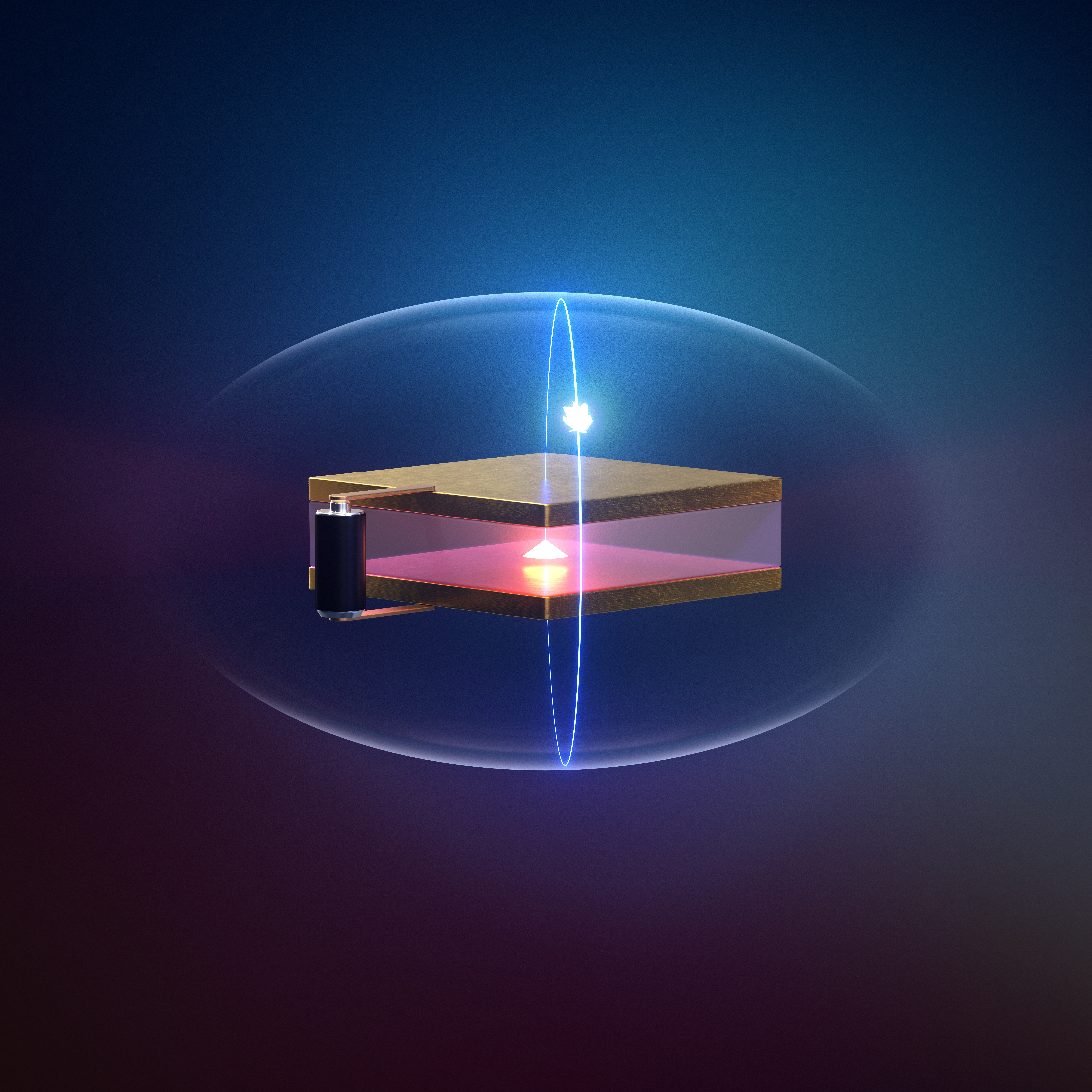
Current projects
- Single-photon source: the quest for the ultimate end-to-end efficiency
- Development of a source of photonic cluster-states
- Efficient creation of spin-photon entanglement using low-noise NV centres in diamond
Key collaborators
- Patrick Maletinsky, Quantum Sensing Group in Basel (diamond photonics)
- Arne Ludwig and Andreas D. Wieck, Lehrstuhl für Angewandte Festkörperphysik, Ruhr University Bochum (quantum dot photonics)
Two-dimensional semiconductors
Tailored quantum nanosystems
Two-dimensional semiconductors such as monolayer MoS2 have a direct bandgap in the red part of the spectrum. The bandgap is located not at the centre of the Brillouin zone (as for GaAs) but at the edges, the +K and –K points. Electrons can be injected optically into the +K-valley or in the –K-valley simply by choosing the circular polarisation. A monolayer of MoS2 can be embedded in a so-called van der Waals heterostructure using h-BN as an insulator, few-layer graphene as a gate. A striking feature is that electrons interact strongly with each other in MoS2 and related materials. Quantum nanosystems can be built by exploiting these features.
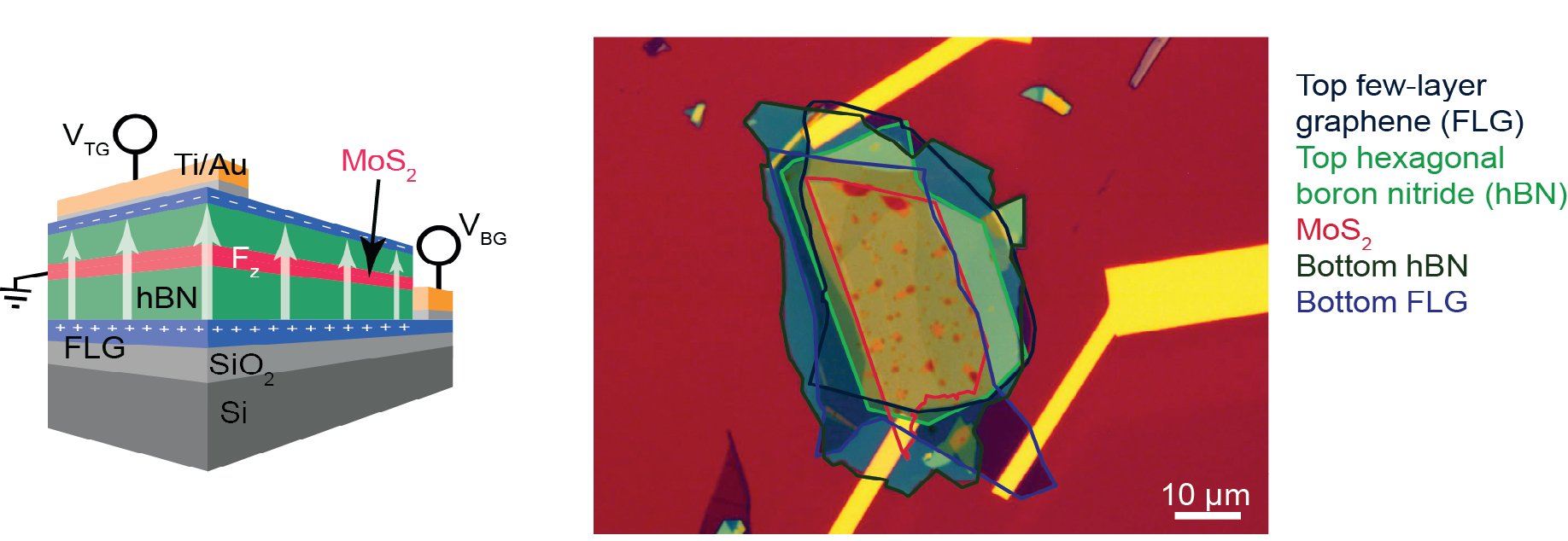
Key capabilities
- Dry-transfer technique for assembling high quality van der Waals heterostructures
- Control of twist angle via polarization-resolved second harmonic generation
- Local measurement of the optical susceptibility at low temperature
Recent achievements
- Giant Stark splitting of an exciton in bilayer MoS2 : an interlayer exciton in bilayer MoS2 exhibits both a high oscillator strength and highly tunable energy in an applied electric field
- Observation that the ferromagnetic state of electrons in MoS2 disappears rather abruptly at a critical density – evidence for a first-order phase-change!
- Observation that electrons in MoS2 spontaneously spin polarise and form a ferromagnetic state
- Quantum-confined Stark effect of an exciton in MoS2 : the exciton is only weakly polarisable
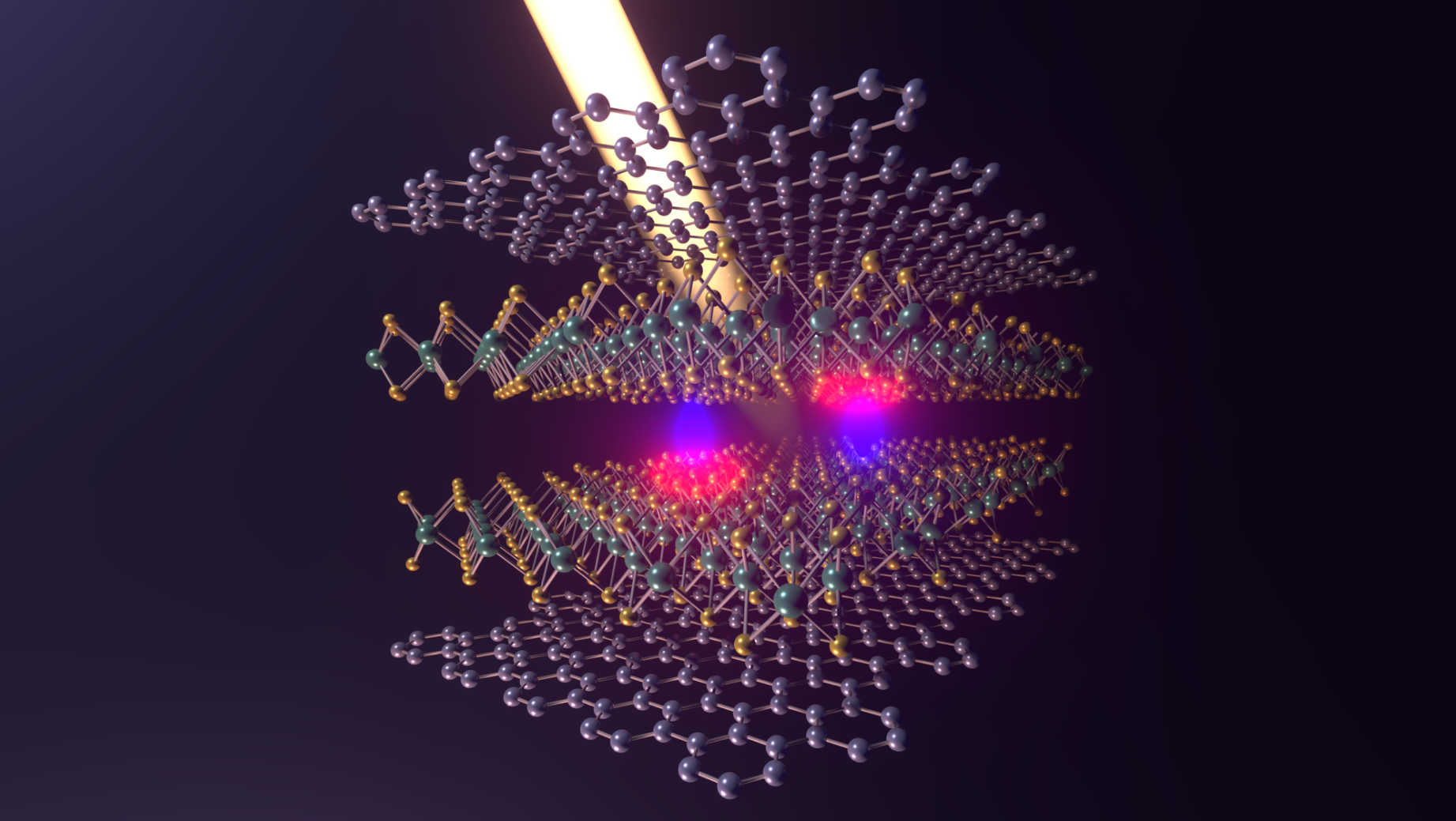
Current projects
- Detecting electron spin polarisation in gated MoS2 with a scanning magnetometer
- Photoluminescence of gated MoS2 as a probe of the spin polarisation
- Excitons in a periodic “Moiré” potential
Key collaborators
- Martino Poggio, Poggio Lab in Basel (magnetometry)
- Berhard Urbaszek, INSA Toulouse (gated MoS2)